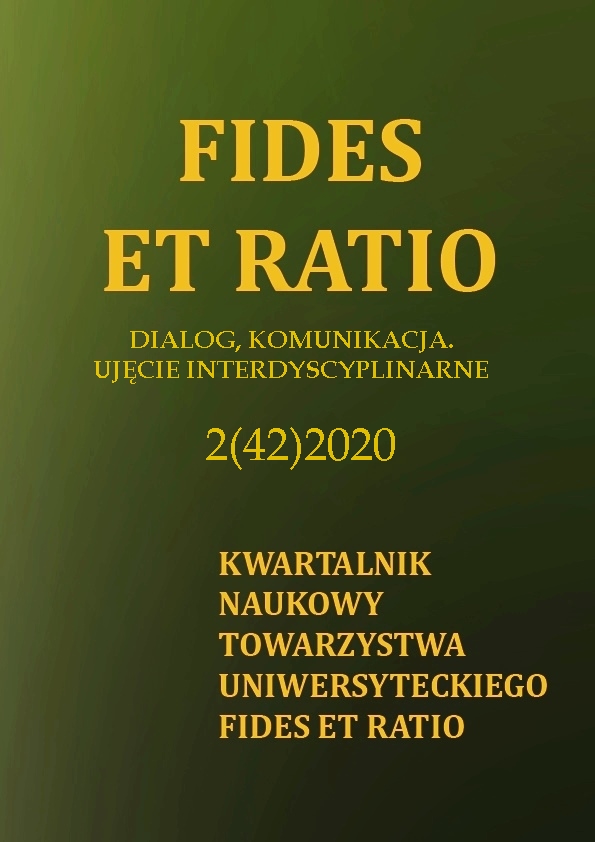Abstract
Dysfunctions in the communication process are one of the basic symptoms of autism spectrum disorders. Quantitative, qualitative and pragmatic language deficits affect most people with ASD. One of the characteristic problems is echolalia, which can be immediate, deleyed or functional. The aim of the article is to analyze the function of deleyed echolalia in a group of children with ASD. The ethnographic method was used in the research process conducted in the qualitative strategy. Based on the analyzes to which the statements of people with autism were subjected, it can be concluded that deleyed echolalia can perform communication functions and constitute a basis for the development of further language skills.
References
Błeszyński J.J. (2009). Czy echolalia w autyzmie jest problemem komunikacyjnym? (w:) B. Winczura (red.) Autyzm, Na granicy zrozumienia, 101-108 Kraków, Impuls
Bobkowicz-Lewartowska L. (2014). Autyzm dziecięcy. Zagadnienia diagnozy i terapii, Kraków: Impuls
Creswell J. W. (2013). Projektowanie badań naukowych. Metody jakościowe, ilościowe i mieszane, Kraków: Wyd. UJ
Danon-Boileau L. (2006). Children without language: From Dysphasia to Autism, Oxford-New York: Oxford University Press
Frith U. (2016). Autyzm. Wyjaśnienie tajemnicy, Gdańsk: GWP
Gladfelter A., VanZuiden C. (2020). The Influence of Language Context on Repetitive Speech use in Children with Autism Spectrum Disorder, American Journal of Speech-Language Pathology 29 (1), 327-334
Golysheva M. D. (2019) A Review on Echolalia in Childhood Autism, Advances in Social Science, Education and Humanities Research, nr 333, 200-204
Gomes E., Pedroso F. S. (2007). Language in autism (w:) L. B. Zhao (red.), Autism Research Advanced, 121-136, New York: Nova Science Publisher
Grabias S. (2007). Język, poznanie, interakcja, (w:) T. Woźniak, A. Domagała (red.), Język. Interakcja. Zaburzenia mowy. Metodologia badań, 355- 377, Lublin: Wyd. UMCS
Kielar-Turska M. (2016). Sprawności językowe i komunikacyjne a inne funkcje psychiczne, (w:) S. Milewski, K. Kaczorowska-Bray (red.), Logopedia. Wybrane aspekty historii teorii i praktyki, 70-86, Gdańsk: Harmonia
Kopańska M. (2014). Komunikacja dziecka z autyzmem, (w:) D. Baczała, J. J. Błeszyński (red.), Komunikacja w logopedii. Terapia, wspomaganie, wsparcie, Toruń: Wyd. UMK 123-168
Kubinowski D. (2010). Jakościowe badania pedagogiczne, Lublin: Wyd. UMCS
Kupisiewicz M. (2013). Słownik pedagogiki specjalnej, Warszawa: PWN
Lim H. A. (2012). Developmental Speech-Language Training through Music for Children with Autism Spectrum Disorder. Theory and Clinica Application, London-Philadelphia: Jessica Kingsley Publishers
Pąchalska M., MacQueen B. D. (2009). Mózg i pragmatyka, (w:) Ł. Domańska, A. R. Borkowska (red.), Podstawy neuropsychologii klinicznej, 195-231, Lublin: Wyd. UMCS
Pisula E. (2010). Autyzm – przyczyny, symptomy, terapia, Gdańsk: Harmonia
Prelock P. A., Paul E., Allen E.M. (2011). Evidence-Based Treatments in Communications for Children with Autism Spectrum Disorder, (w:) B. Reichow, P. Doehring, D.V. Cicchetti, F. R. Volkmar (red.) Evidence-Based Practices and Treatments for Children with Autism. 93-169, New York: Springer Science Business Media
Roberts J. M. A. (2014). Echolalia and language development in children with autism (w:) J. Arciuli R. Brock (red.) Communication in Autism, 55 – 74, Amsterdam – Philadelphia: John Benjamins Publishing Company
Smereka T. (2009). Język a myślenie. Terapia osób z zaburzeniami mowy, Wrocław: Wyd. Uniwersytetu Wrocławskiego
Stiegler L. N. (2015). Examining the Echolalia Literature: Where Do Speech-Language Pathologists Stand?, American Journal of Speech-Language Pathology, 24, 750–762
Sundberg M. (2015). VB-MAPP. Ocena osiągania kamieni milowych rozwoju i planowanie terapii, Warszawa: Fundacja Scolaris
icd.who.int/en [dostęp: 02.06.2020]
